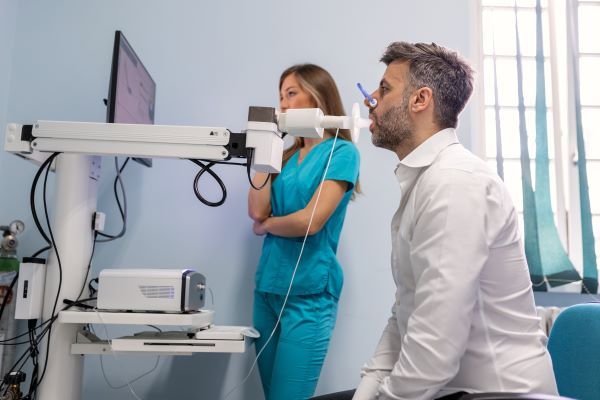Hint: You need to show medical necessity for 94060.
Pulmonology coders who are newly credentialed and have years of experience can make mistakes while reviewing documentation and then selecting codes for procedures. One area where mistakes commonly occur is when reporting pulmonary function test (PFT) encounters.
Check out three PFT billing mistakes and learn how you can make adjustments in your own practice.
Mistake 1: Report 94060 Without Medical Necessity
When a patient presents to a pulmonology practice with complaints of shortness of breath, wheezing, or a persistent cough, the pulmonologist will perform spirometry to assess the patient’s lung function. The common spirometry procedure codes in the CPT® code set include:
Code 94010 is considered a loop PFT where, if the results of the flow volume loop are normal, the pulmonologist is not going to perform the second part of the test. Code 94010 is the first part of 94060, also known as the pre-bronchodilator administration portion. If baseline testing reveals airflow limitation and the need for further testing with bronchodilator administration, then the pulmonologist will move onto the second part of the spirometry test.

“There has to be medical necessity to do what they call a double or a pre- and post-[bronchodilator] in order to measure what happens after they give you medication,” said Jill Young, CEMC, CPC, CEDC, CIMC, owner of Young Medical Consulting in East Lansing, Michigan during the AAPC webinar, “Pulmonary Medicine - Office and Procedure Billing.”
For example, if the patient has mild asthma, the pulmonologist may need further testing after reviewing the flow volume loop test. “If you give the patient medicine that opens up their airways, that in and of itself helps the pulmonologist make that diagnosis,” Young said.
Mistake 2: Report Services That Are Bundled Into Spirometry Procedures
Spirometry is a PFT that involves several services bundled into one procedure code. Regardless of whether the provider performed 94010, 94011 (Measurement of spirometric forced expiratory flows in an infant or child through 2 years of age), 94012 (… before and after bronchodilator, in an infant or child through 2 years of age), or 94060, it’s crucial to know which services are included in the procedure.
As you review the procedure note for a spirometry encounter, you may be tempted to report each individual service the pulmonologist performed, such as:
When you review 94010’s descriptor, you’ll see that the code includes total and timed vital capacity (94150), maximal voluntary ventilation (94200), and flow rate measurement (94375). At the same time, both 94010 and 94060 feature parenthetical notes instructing you to not report the procedure codes with 94150, 94200, 94375, and other individual service codes.
Mistake 3: Possess Insufficient Documentation For PFT Interpretations
Medicare pays for interpretations of diagnostic tests, but you must have the correct documentation to receive accurate reimbursement. For example, residents and fellows may perform interpretations of diagnostic tests. However, the teaching physician must review their interpretations.

Why? Medicare rules stipulate that if the teaching physician’s signature is the only signature on the interpretation, then the agency assumes that person performed the interpretation. “If the resident prepares and signs the interpretation, the teaching physician has to show that they personally reviewed and then either agrees or disagrees. There has to be, not just a signature by the physician, there has to be some information that they’ve got a comment or something about that test,” Young said.
Brief notations by the interpreting physician or the resident, such as “normal” or “abnormal,” are considered a review of a test instead of an interpretation. According to the Medicare Claims Processing Manual, “A professional component billing based on a review of the findings of these procedures, without a complete, written report similar to that which would be prepared by a specialist in the field, does not meet the conditions for separate payment of the service.”
In other words, for the service to be billable, the interpreting physician or the resident must provide detailed information regarding the interpretation and sign off on the report. If the resident initially interpreted the test, the teaching physician must review and agree, or edit the resident’s interpretation to satisfy the guidelines for diagnostic test interpretation and receive payment.
